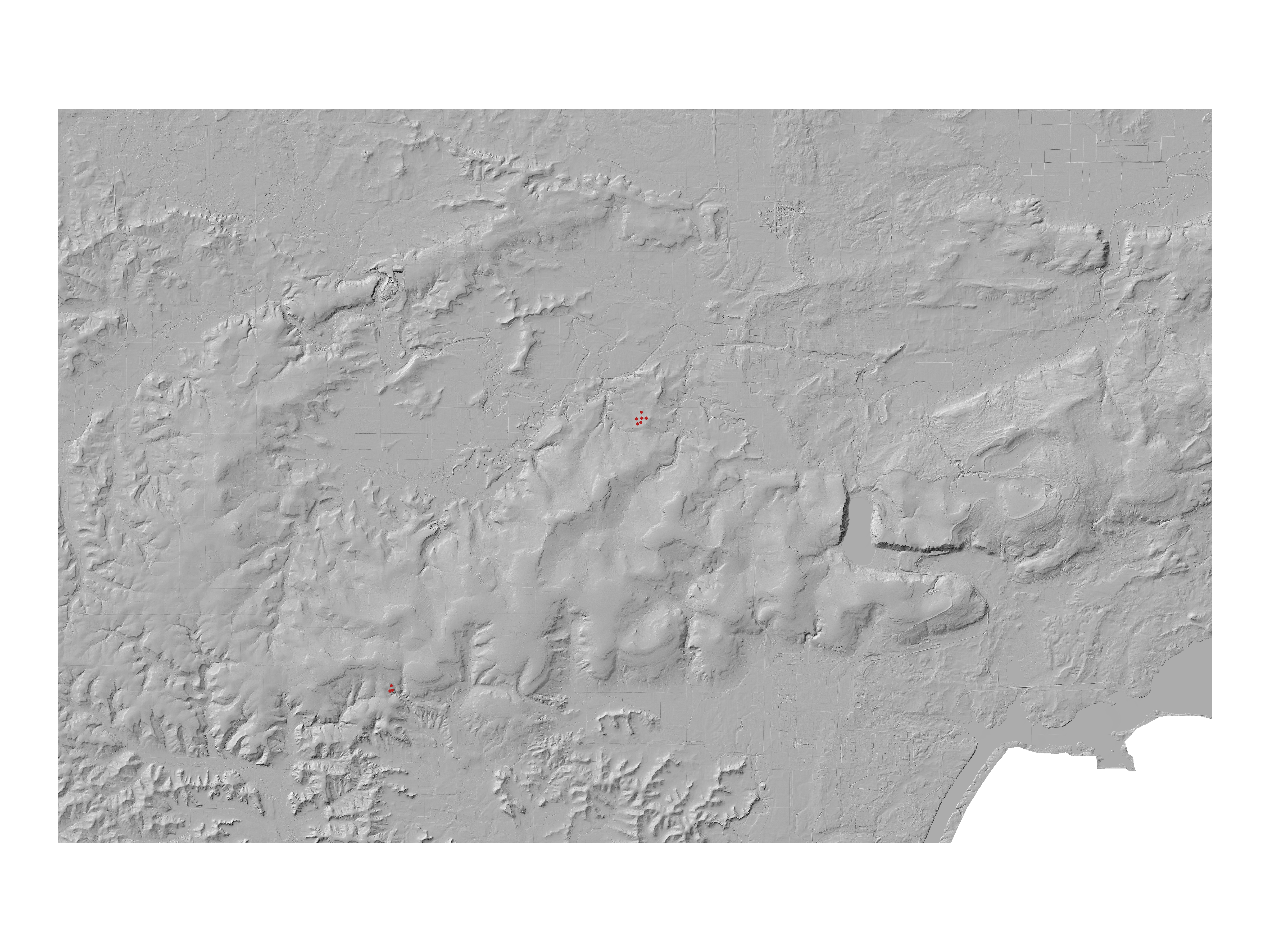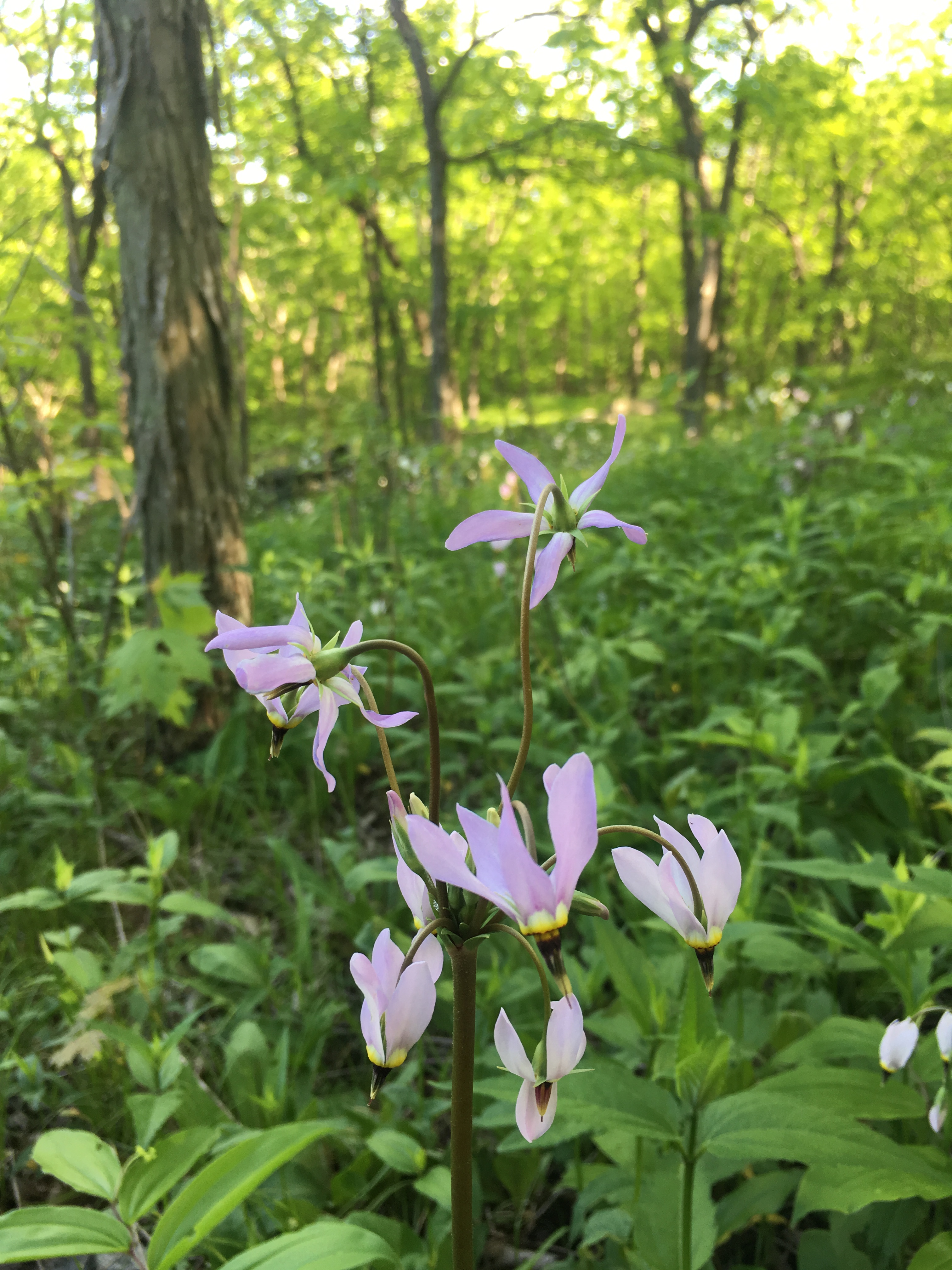Plant Ecology in the Baraboo Hills
The Baraboo Hills and surrounding landsape support more than 1300 plant species! This represents more than 60 percent of species found in the state of Wisconsin and includes many species otherwise restricted to more northern latitudes.
See descriptions below for several research projects I have in the Baraboo Hills. Also check out my PhD research.
Forest tree dynamics
Beginning in 2018, I established a network of 1 hectare plots within the Baraboo Hills to monitoring forest dynamics. Within each plot, my team identified, mapped, measured, and permanently tagged every tree greater than 1 centimeter DBH (a total of 4708 trees!). Additionally, we surveyed tree seedlings in ~360 quadrats, took hemisperhical photographs to quantify canopy cover, and characterized soil characteristics.
Monitoring the growth and mortality of individual trees will allow us to address many interesting questions, such as:
- What factors influence patterns of tree seedling recruitment and sapling growth?
- How do rates of tree growth and mortality vary among species and sites?
- Does tree growth or mortality vary with proximity to neighboring trees or the density of conspecific individuals?
Long-term vegetation monitoring

I am establishing a network of plots designed to study long-term vegetation dynamics across the Baraboo Hills. These plots are stratified by land use history, slope, aspect, and vegetation type.
- How does land use history affect the composition and diversity of plant communities?
- How do management practices such as the use of prescribed fire & thinning trees affect vegetation dynamics?
- How will climate change affect the distribution and dynamics of plant communities?
Environmental heterogeneity and the distribution of plant species within a quartzite glade

Bedrock glades are unique plant communities characterized by sparse tree cover and thin, discontinuous soil with exposed bedrock. These glades support an eclectic assortment of plant species associated with prairies, savannas, woodlands, and rock outcrops. I studied plant distributions within the largest concentration of quartzite glades in the Baraboo Hills to understand what factors influence local plant distributions and diversity.
Topography, microclimatic variation, and the distribution of plants within stream gorges
